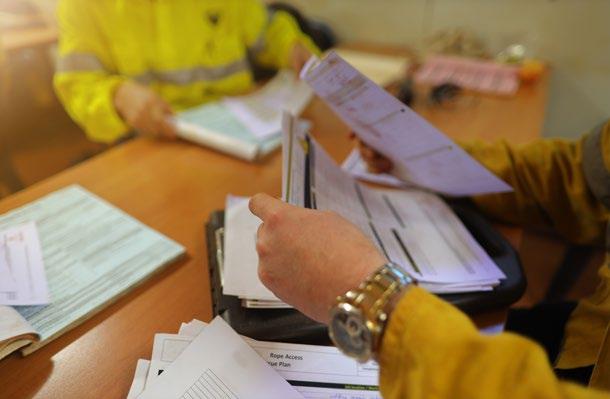
3 minute read
WA’s new work health and safety laws
WA HAS JOiNED OTHEr STATES AND TErriTOriES (EXClUDiNG ViCTOriA) iN ADOpTiNG THE NATiONAl MODEl WOrK HEAlTH AND SAFETY (WHS) lAWS.
Commencing in March 2022, the Work Health and Safety Act 2021 (WHS Act) is the biggest overhaul of safety laws in WA in over 30 years. The WHS Act replaces the current Occupational Safety and Health Act 1984 and parts of the Mines Safety and Inspection Act 1994 and the Petroleum and Geothermal Energy Resources Act 1967. While predominately based on the model WHS Act, the WA WHS Act does not exactly mirror the harmonisation laws. Below is a summary of key differences in the WA WHS Act.
Category 1 offences
in the absence of separate industrial manslaughter provisions, category 1 offences attract the most severe penalties under the model WHS Act. A person commits a category 1 offence under the model laws if they knowingly engage in conduct that exposes a person (to whom a duty is owed) to a risk of death or serious injury or illness.
To successfully prosecute a category 1 offence under the WHS Act, a prosecutor must prove that a failure to comply with a health and safety duty caused the death of, or serious harm to, an individual.
‘Serious harm’ includes an injury or illness that endangers or is likely to endanger the individual’s life, or results in or is likely to result in permanent injury or harm to the individual’s health.
Category 1 offences under the WHS Act carry a maximum penalty of:
½ five years imprisonment and a fine of between $340,000 and $680,000 for individuals; and ½ a fine of $3.5 million for body corporates.
Prohibition on insurance
Industrial manslaughter
The most controversial difference is the inclusion of industrial manslaughter provisions in the WHS Act. Under the Act, industrial manslaughter is a criminal offence with no limitation period. Only persons conducting a business or undertaking (pCBU), and their officers can be charged with industrial manslaughter. Under section 30A, the prosecution must establish that: ½ the pCBU engaged in conduct (an act or omission) that caused the death of an individual; ½ the conduct constituted a failure to comply with a health and safety duty; and ½ the pCBU knew that the conduct was likely to result in death or serious harm and acted in disregard of that likelihood.
For an officer to be charged, the prosecution must establish that the pCBU’s conduct was attributable to the officer’s neglect or engaged in with the officer’s consent or knowledge. The offence carries severe penalties of up to: ½ 20 years imprisonment and a fine of $5 million for individuals; and ½ a fine of $10 million for body corporates.
Enforceable undertakings
Enforceable undertakings are an alternative to prosecution. The WHS Act allows the regulator to accept a written undertaking in relation to a contravention or alleged contravention of the WHS laws. WHS undertakings are not available for industrial manslaughter offences or a category 1 offence.
Sue Gismondi
HSEQ Manager, NECA WA safety@necawa.asn.au Another significant inclusion in the WHS Act is the prohibition on insurance policies and indemnities against fines.
Under section 272A of the WHS Act, penalties apply to those who: ½ insure or indemnify against fines under the WHS Act; ½ are insured or indemnified against fines under the WHS Act; and ½ pay or accept an indemnity for an offence under the WHS Act.
The maximum penalty is $51,000 for individuals and $255,000 for body corporates.
WHS issue resolution
Section 82 of the WHS Act provision enables inspectors to attend a workplace to “assist in resolving” a WHS issue and “make a decision resolving the issue”.
The inspector must decide within two days or request an extension of time under section 82A of the WA Act.
Disclaimer: This summary is a guide only and is not legal advice. For further information on WA’s new WHS laws, call NECA Safety on (08) 6241 6100










